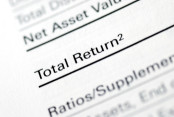Modigliani and Miller, famous for their capital structure theories, advanced the dividend irrelevance theory, which we’ll look at in greater detail below. If you are giving the CFA exam or any professional finance exam, this theory is one of the essential learning outcomes. Below we’ll analyze the theory, how investors deal with dividend cash flows and whether the theory stands true in real life.
The Theory
Modigliani and Miller suggested that in a perfect world with no taxes or bankruptcy cost, the dividend policy is irrelevant. They proposed that the dividend policy of a company has no effect on the stock price of a company or the company’s capital structure.
MM say that if an investor gets a dividend that’s more than he expected then he can re-invest in the company’s stock with the surplus cash flow. If the expected dividend is too small, then he can sell a part of his shares and replicate the same cash flow he would get if the dividend was what he expected. In both cases, investors are irrelevant to what the company’s dividend policy is because they can create their own cash flows.
Higher returns are what investors care about. They can have that return through re-investing or selling a part of their shares. If the market conditions are perfect, then they don’t care if the return is from dividends or from stock price appreciation.
Assumptions of the Theory
For this theory to work, investors need a certain frame of mind and this can be achieved only if we live in a perfect world.
Some of the assumptions for this theory are:
- Taxes do not exist: Personal income taxes or corporate income taxes
- When a company issues a stock, there are no flotation costs or transaction costs
- When a firm decides its capital budgeting, dividend policy has no impact on it
- Information is readily and freely available to all investors. Information about the firm’s future prospects is available to the company’s manager as well as investors
- Leverage has zero impact on the cost of capital of the company
The Theory in Real Life
In reality, none of these assumptions stand true. Taxes are a certainty for all of us. Companies have to deal with flotation costs while dealing with issuances. Information is readily available to everyone, but the tools and sophistication with which institutional investors analyze securities is far better than what a retail investor might use. The information that a company’s manager might have is still superior than what an institutional investor might have in spite of the sophisticated tools that they possess.
MM believe that it’s only the company’s ability to earn money—and how risky that activity is—that has an impact on the value of the company. MM’s conclusions might stand true theoretically but they do not stand true in the practical world.





